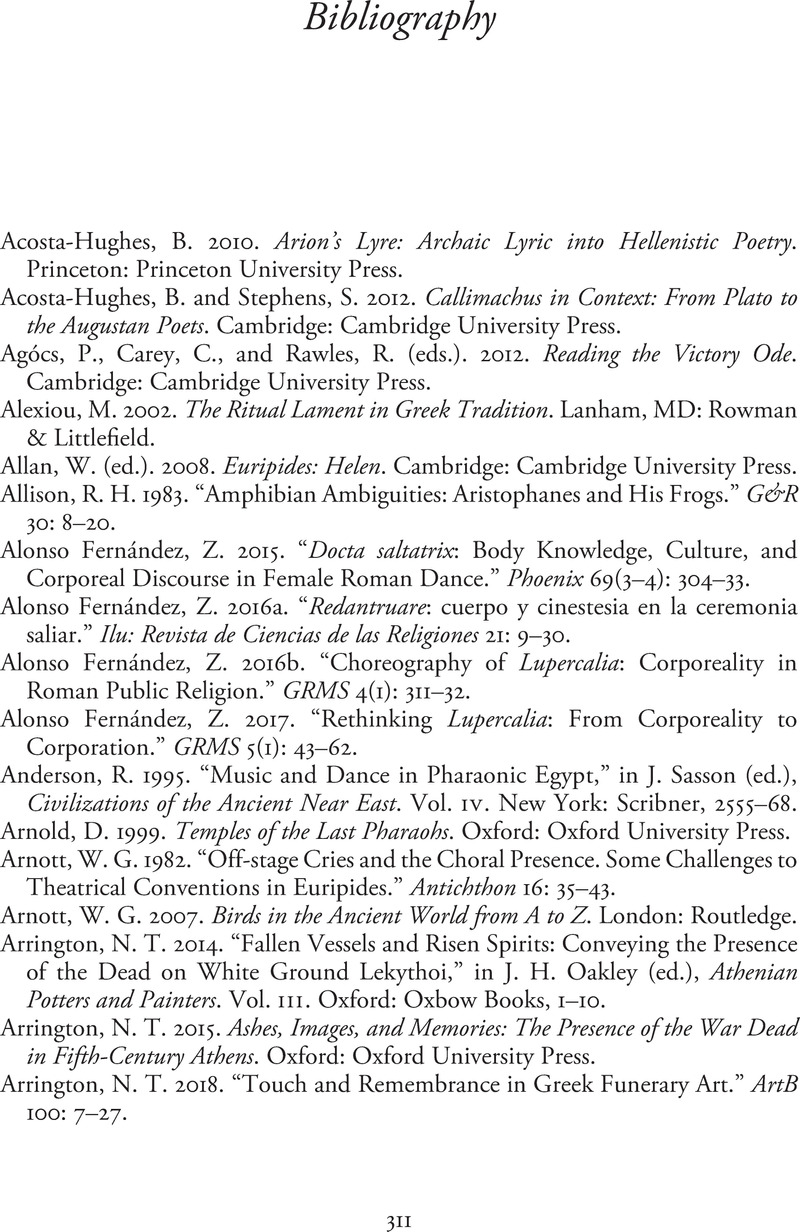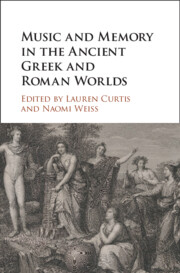Book contents
- Music and Memory in the Ancient Greek and Roman Worlds
- Music and Memory in the Ancient Greek and Roman Worlds
- Copyright page
- Contents
- Figures
- Contributors
- Acknowledgments
- Note on Texts and Abbreviations
- Part I Approaching Music and Memory
- Part II Music, Body, and Textual Archives
- Part III Technologies of Musical Memory
- Part IV Audience, Music, and Repertoire
- Part V Music and Memorialization
- Bibliography
- General Index
- Index Locorum
- References
Bibliography
Published online by Cambridge University Press: 14 October 2021
- Music and Memory in the Ancient Greek and Roman Worlds
- Music and Memory in the Ancient Greek and Roman Worlds
- Copyright page
- Contents
- Figures
- Contributors
- Acknowledgments
- Note on Texts and Abbreviations
- Part I Approaching Music and Memory
- Part II Music, Body, and Textual Archives
- Part III Technologies of Musical Memory
- Part IV Audience, Music, and Repertoire
- Part V Music and Memorialization
- Bibliography
- General Index
- Index Locorum
- References
Summary

- Type
- Chapter
- Information
- Music and Memory in the Ancient Greek and Roman Worlds , pp. 311 - 351Publisher: Cambridge University PressPrint publication year: 2021



